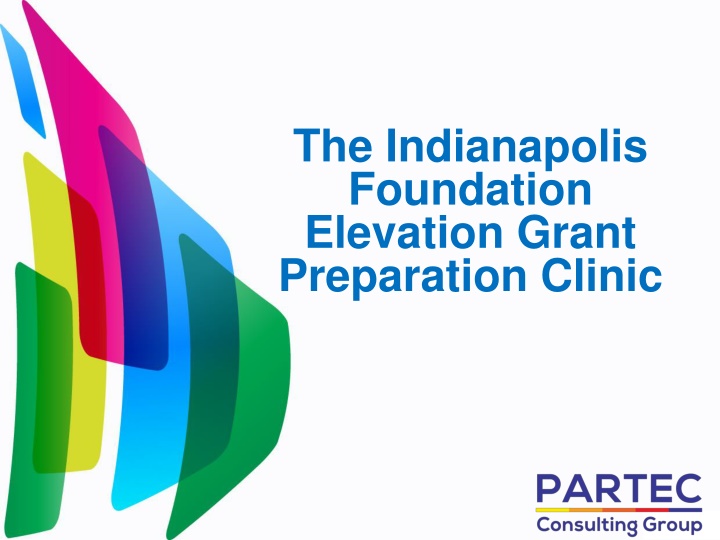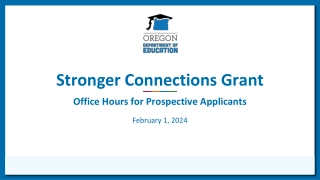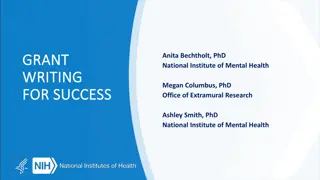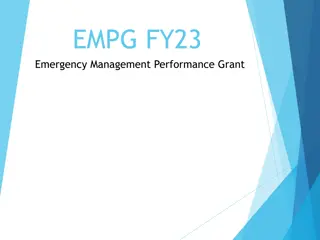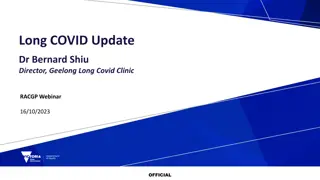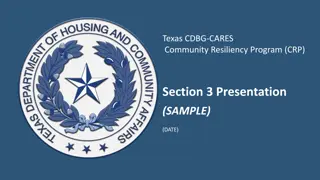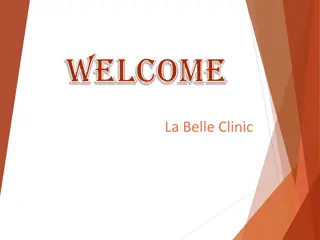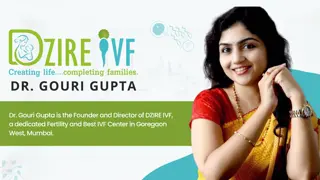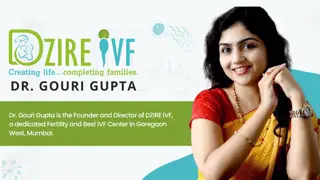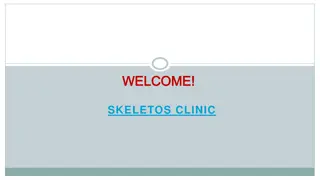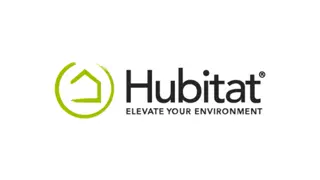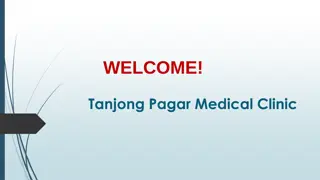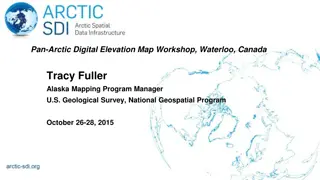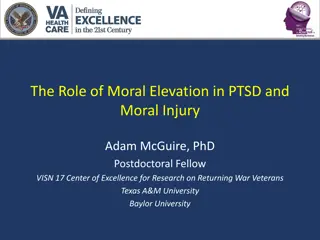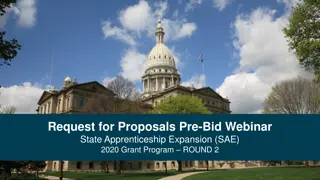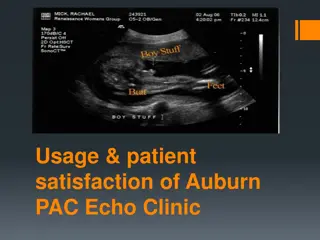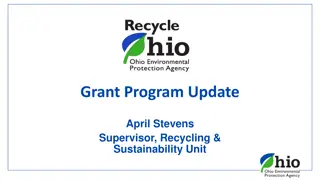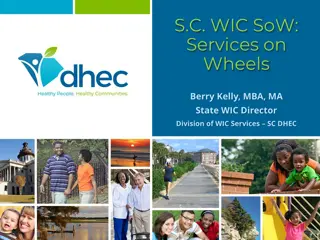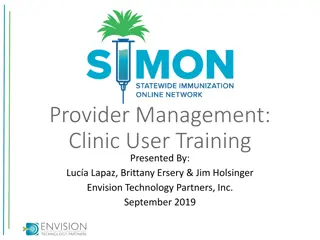Elevation Grant Clinic & Program Overview
The Indianapolis Foundation Elevation Grant Preparation Clinic offers insights into priority areas, performance metrics, application tips, and breakout sessions for effective grant applications. Meet the Clinic Response Team and learn about the Elevation Grant Program's focus on supporting strategies to address crime, thematic areas for Round 1, and priorities to promote neighborhood safety and reduce crime in Indianapolis.
Download Presentation

Please find below an Image/Link to download the presentation.
The content on the website is provided AS IS for your information and personal use only. It may not be sold, licensed, or shared on other websites without obtaining consent from the author.If you encounter any issues during the download, it is possible that the publisher has removed the file from their server.
You are allowed to download the files provided on this website for personal or commercial use, subject to the condition that they are used lawfully. All files are the property of their respective owners.
The content on the website is provided AS IS for your information and personal use only. It may not be sold, licensed, or shared on other websites without obtaining consent from the author.
E N D
Presentation Transcript
The Indianapolis Foundation Elevation Grant Preparation Clinic
Welcome 2
Agenda Introductions Session Objectives Overview of the Priority Areas Understanding Performance Metrics Tips for Preparing Your Application Breakout into Smaller Groups Close 3
Your Clinic Response Team! The Indianapolis Foundation Pamela Ross Alicia Collins Laurie Burns Beth Millikan Partec Consulting Group Alyson Small Daryl Mason Perry Gunn Hampton Shields Roderick Wheeler 4
About the Elevation Grant Program Alicia Collins 5
Supporting Strategies to Address Crime Reduce initial or chronic interaction with criminal and/or juvenile justice systems Increase the safety of Indianapolis residents and their neighborhoods Reduce risk factors (factors that increase the likelihood of engaging with juvenile or criminal justice system) or Increase protective factors (factors that decrease the impact of risk factors) 6
Thematic Areas for Round 1 Thriving Neighborhoods: Available to grassroots organizations performing resident-led solutions that are shorter-term crime prevention, crime reduction, and other community outreach & mobilization activities. Empowered Youth & Young Adult: Available to community-based organizations performing longer-term crime prevention activities, including activities for young people in Marion County who have been identified as at high risk for violence and who may or may not be connected to the justice system. Restoration & Resilience: Available to community-based organizations, not limited to, addressing trauma, providing therapeutic supports, healing, and reducing the use of drugs and/or alcohol. 7
Priorities for Round One Place-based efforts designed to promote neighborhood safety and reduce or prevent crime in a specific geographical area Focused efforts on providing supportive services (such as employment, education, mentoring, recreation, mental health supports, and family support services) Partners with public agencies in collaboration. 8
Examples of Priorities Integrated, evidence-based outreach activities through discrete activities, that targets, engages hard-to-reach populations connected to gun-violence related activities Provide intervention services to youth (16-24) and adults (24-30) currently interacting with the criminal justice system in the areas of employment and job retention for the population(s) of focus Improve neighborhood safety within IMPD s patrol districts through community mobilization efforts 9
Are You Eligible To Apply? Have an EIN (Employer Identification Number) Must be a 501c3 nonprofit/Tax-Exempt Number Registered in SAM.GOV and maintained annually while administering grant funds. In good standing with the State of Indiana and IRS Too small or too new? May need a fiscal sponsor 10
What Is A Fiscal Sponsor? Another 501c(3) that receives grant funds on behalf of an entity or another nonprofit. The status of the smaller entity determines the extent the Fiscal Sponsor is engaged in the work The Fiscal Sponsor is responsible for all activities associated with the grant. It is important to have a solid, trusting relationship with the FS and to understand the extent of their involvement in the work No such thing as the FS receiving the funds and not managing the funds and program reporting. 11
A Few Other Details Restricted to Marion County Priority Population: Individuals meeting the criteria below: African-American/Latinx males between the ages 18- 35. Individuals most at-risk of violent victimization or perpetration of violent acts (previously shot/known gun activity, close friend/family member shot in last 12 months), referring to pro-social & supported grassroots and community-based organizations. Individuals with multiple criminal justice involvement & who are unemployed, underemployed, no HS diploma or HSE/GED. Grant award range: $20,000 - $250,000 Organization must disclose if it has received federal funds in the past year Organization must submit quarterly program and financial reports 12
Understanding Performance Metrics Laurie Burns 13
Measuring Performance Every grant recipient will be required to measure their performance In the application, organizations/programs will be asked to select: 1 crime prevention performance measure 1 program performance measure You will pick the measure that best aligns with your program/strategy/activities These measures will require an organization to count something 14
Examples of Crime Prevention Measure Violence Reduction Programs that serve a specific geographical location Programs that address root causes of crime Programs that go door-to-door meeting neighbors needs Programs that engage a coalition of individuals for collective action Recidivism Programs that serve a specific group of people Programs that address risk factors for engaging with the criminal justice system Programs supporting individuals getting and keeping a job, increasing education, decreasing substance use 15
Program Measure Examples: Youth Attitudes and Skills Development Programs that teach/train youth in a new skill set i.e. computer coding, music production, gardening, etc. Employment Retention Programs that support individuals in getting and keeping a job Youth Violence Reduction Suspensions and Expulsions Programs that support youth and/or school staff in resolving conflicts Community Building Programs that engage community members in some sort of collective action 16
What If I Have Never Written A Grant? Follow the Directions! 17
Key Sections of a Proposal Instructions Narrative Budget Attachments 18
Questions Before Writing How does my program or activity align with the Elevation Grant Program priority? Will I propose something new or existing? What modifications may be needed to my internal infrastructure to administer the grant? Bookkeeping Data collection and reporting Who are my partners? How will I sustain the program or activities after the funding ends? What performance measures will I select? 19
Approaching the Application 1. Download a free copy of Grammarly purchase premium version if possible 2. Make sure you have created an account in SmartSimple for your organization 3. Scan through the entire application to understand what is being asked BEFORE you start writing 4. Copy the major headings with questions and create a Word document 20
Big Tip For Today! Don t rush to start writing Use ( ) bullets to capture your thoughts You can rearrange bullets When you are ready, the bullets can be converted to sentences 21
Keep in Mind Are you starting or expanding your work? This is a one-year grant Cannot reapply if you don t close out this grant Not the grant for vehicles or buildings Prioritize self sufficiency of target population Collaborations are important 22
Its Time to Brag! In describing your organization, Highlight past accomplishments Past activities Diverse partners (all partners don t need to be paid!) Use of volunteers Any news coverage 23
Narrative Result statement The Indianapolis Foundation Mission Alignment High-level overview of your proposal Description of Activities Management and organizational capacity Three Key Partners Signed Agreement Program Sustainability Performance Measures 24
Other Major Headings Program Performance Measure Budget Attachments 25
Core Elements of Your Program or Service? Who do you serve? How do you evaluate your impact? What do you offer? Program Where do you operate? Who provides the services? How are your collaborative partners What other resources support the program? When do you document your work? 26
Using Volunteers? Describe what they will do Estimate the number of hours Be prepared to talk about how you will track their time Volunteers are an example of leveraged resources (25.67 per hour) Include this information in your reports and proposals 27
How to Make Your Application Stand Out Focus on your strengths Be mindful of what other organizations are offering in your service area Integrate stories about your successes Think about what can be sustained or scaled after grant ends 28
Words To Make Your Work Stand Out Innovative Informative Promising Asset- based Cutting- edge Community- centered Community- informed 29
Tips About the Budget Do you have salaried employees or contractors? Consultants vs. contractors Not necessary to use every line item Prioritize what is needed to deliver your program, activity or service People? Curriculum? Supplies? 30
